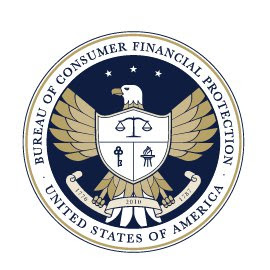The Consumer Financial Protection Bureau is dead. Did you know that?
No, the agency that everyone in the financial services industry loves to hate isn’t totally gone, at least not yet… but the CFPB as you knew it is dead.
The bureau’s cause of death? Mick Mulvaney.
Ever since taking over as the interim director of the CFPB last year, Mulvaney has made his intentions clear about the agency that he once called a “sick, sad joke.” It seems that Mulvaney wants the CFPB to disappear and he’s doing his damnedest to make sure that happens.
Mulvaney has already moved to substantially alter the operations of the CFPB by laying out a new mission for the bureau and asked Congress to significantly reduce the CFPB’s authority and independence.
Just yesterday, Mulvaney told the American Bankers Association’s conference that he’s considering putting an end to the public’s access to the CFPB’s controversial consumer complaint database.
Mulvaney also told the CFPB’s employees that the agency was ending regulation by enforcement, adding that the agency works not only for consumers, but also for the companies it supervises.
Mulvaney also reportedly stripped the bureau’s Office of Fair Lending of its enforcement powers, announced that the CFPB would “reconsider” its payday lending rules, and defanged the changes in Home Mortgage Disclosure Act reporting that were to take effect this year, just to name a few of his actions so far.
According to Mulvaney, the overarching philosophy of his moves at the bureau is to hold to the standards established in the Dodd-Frank Wall Street Reform and Consumer Protection Act.
“If there is one way to summarize the strategic changes occurring at the bureau, it is this: we have committed to fulfill the bureau’s statutory responsibilities, but go no further,” Mulvaney said earlier this year. “By hewing to the statute, this strategic plan provides the bureau a ready roadmap, a touchstone with a fixed meaning that should serve as a bulwark against the misuse of our unparalleled powers.”
Mulvaney seems committed to keeping the lights on at the CFPB merely because he is required by law to do so.
The piece de résistance of Mulvaney’s assault on the CFPB is purely cosmetic and frankly, somewhat childish.
According to Mulvaney, there is no CFPB. There never was. So he’s done with the CFPB. That agency doesn’t exist anymore.
The agency isn’t shutting down though, sad as it may be to Wells Fargo and others.
The bureau is still there, but it’s not called the CFPB anymore. Instead, Mulvaney has taken to calling the agency the Bureau of Consumer Financial Protection instead.
The name change effort began somewhat informally, with Mulvaney stating that Dodd-Frank established that the name of the agency is actually the Bureau of Consumer Financial Protection not the Consumer Financial Protection Bureau.
So, in keeping with Mulvaney’s “hewing to the statute” ethos, he started calling the CFPB the BCFP, or simply “the bureau.”
The name change became more official when official communications began coming from the Bureau, rather than the CFPB.
As our Kelsey Ramírez noted earlier this month, when Mulvaney appeared before Congress, his testimony referred to him as the acting director of the Bureau of Consumer Financial Protection.
The bureau also recently released its first official seal, which refers to the agency as the Bureau of Consumer Financial Protection as well.
What really broke the camel’s back in my view was the bureau’s announcement last week that it was fining Wells Fargo $1 billion for mortgage lending and auto insurance abuses.
A little inside baseball: In the past, whenever the CFPB issued official communications or announcements, the announcements always featured the bright green logo of the bureau at the top of the announcement (as seen in the picture below).

But the Wells Fargo announcement was different.
This one didn’t come from the CFPB and it didn’t have the bright green CFPB logo. This one had the Bureau of Consumer Financial Protection seal on it.

And the communication referred to the agency as the Bureau of Consumer Financial Protection, not the Consumer Financial Protection Bureau.
In my four-plus years with HousingWire, I’ve received more than 400 official communications directly from the bureau, and as far as I can tell, this was the first time that the bureau had ever been referred to as the Bureau of Consumer Financial Protection in an official capacity.
In his official response to the bureau’s action against Wells Fargo, House Financial Services Committee Chairman Jeb Hensarling, R-Texas, also referred to the agency as the Bureau of Consumer Financial Protection.
Hensarling being in lockstep with Mulvaney is no surprise though. The two were frequent bashers of the bureau when they both served on the House Financial Services Committee.
But that’s not all. The bureau has also apparently asked the Associated Press, the organization that provides news articles to thousands of news outlets all over the world, to change its official style guide to call the bureau the BCFP, not the CFPB.
The @CFPB has officially requested the @APStylebook change its entry on the Consumer Financial Protection Bureau. Here is our story about how Mulvaney is pushing to rename the consumer watchdog that critics say makes it sound like just another bureaucracy. https://t.co/0RPflVRmgo
— Ken Sweet (@kensweet) April 24, 2018
Calling the bureau by a different name, even if it is the one that’s statutorily mandated in Dodd-Frank, is just another poke at the CFPB’s defenders.
The whole thing is very childish. It’s like a kid who grabs a toy from one of their friends and then rubs it in other kid’s face. Nah-nah. I’ve got the toy now and I can do whatever I want with it.
Mulvaney has the CFPB now and he can apparently do whatever he wants. And he seems to take pleasure in gloating about his shiny new toy.
Yes, changing the name of the bureau is a small change when measured against asking Congress to reduce the agency’s independence or argue that the agency shouldn’t exist altogether, but it’s still a change that de-emphasizes the bureau’s mission of protecting consumers.
And it eliminates whatever brand recognition the CFPB has built up over the last few years. I would hazard a guess that most “normal” people haven’t heard of the CFPB. And no one has heard of the BCFP.
And that’s apparently what Mulvaney wants.
Mulvaney doesn’t think the bureau should exist and is killing it, piece by piece by piece.
When Mulvaney took over at the CFPB, I heard a rumor about one way the Trump administration was considering to deconstruct the CFPB. I couldn’t ever substantiate it, but I heard that they were considering moving the CFPB from Washington, D.C. to another city.
The idea being that by moving the bureau to another city, many of its employees would quit rather than relocate. So by moving the CFPB to St. Louis or New York City or wherever, you could effectively eliminate half (or more?) of the agency’s brainpower in one fell swoop.
The Los Angeles Times must have gotten a whiff of similar rumors as well, as back in December, it wrote about the Trump administration potentially moving agencies to other cities, but that article made no mention of the CFPB.
Consider that the nuclear option.
But instead of going nuclear, Mulvaney is opting for death by a thousand cuts.
Each move that he makes brings the CFPB one step closer to extinction. And thanks to the powers granted to him by Dodd-Frank, there’s not much that CFPB defenders can do to stop him.
So, I guess it’s RIP for the CFPB.
Long live the BCFP? Don’t hold your breath.







